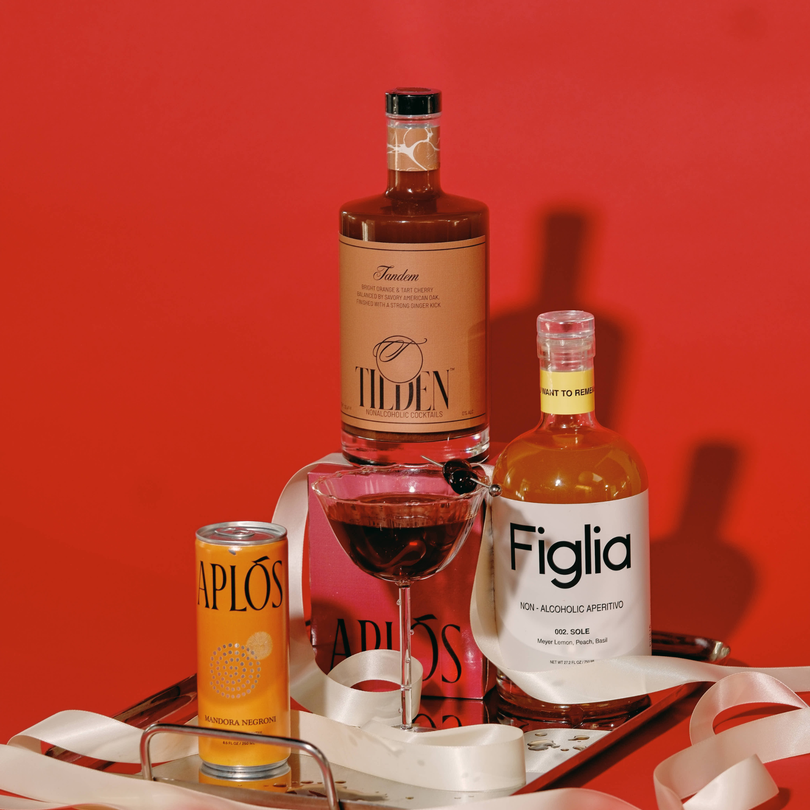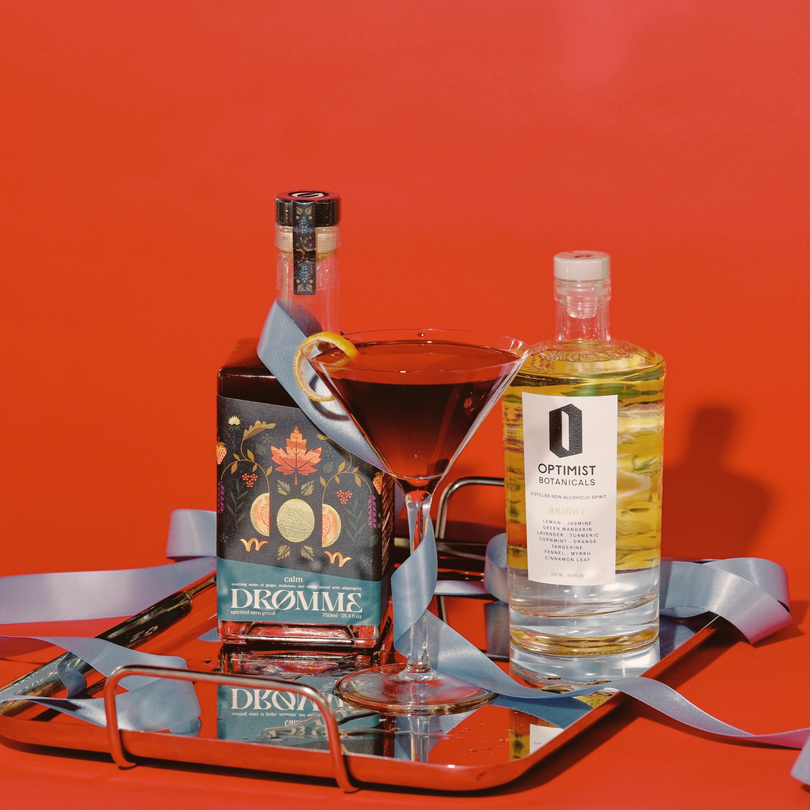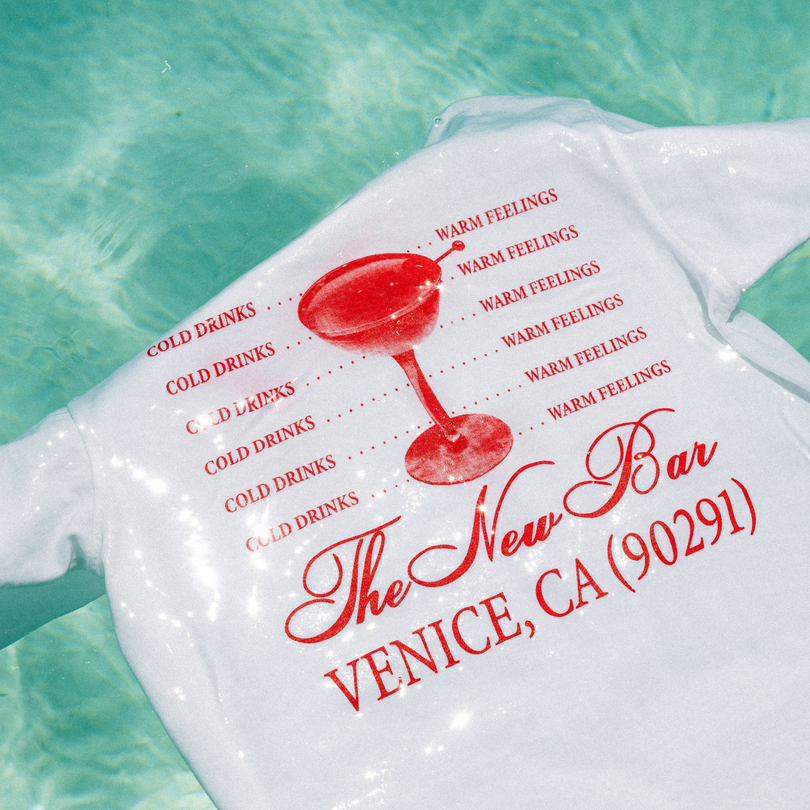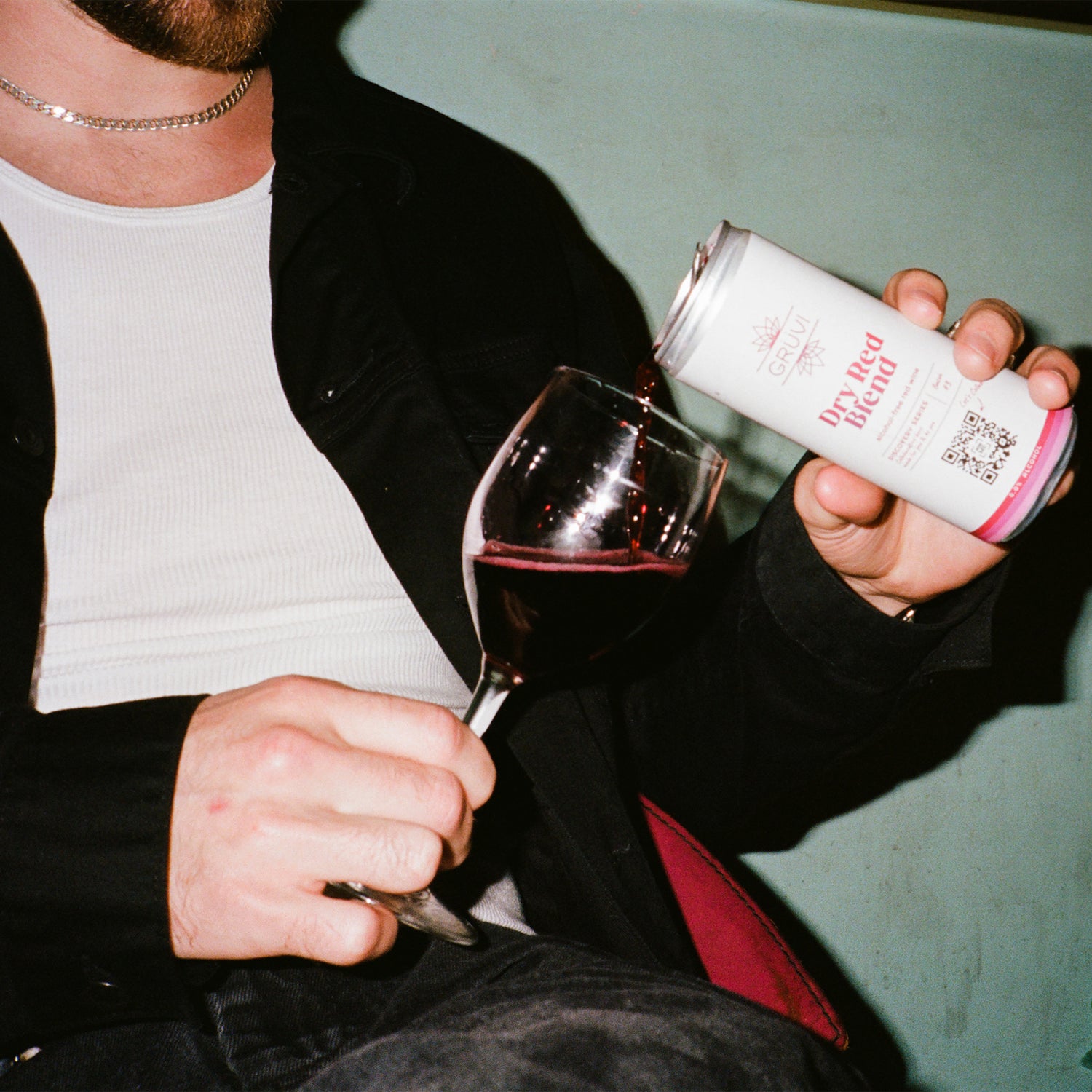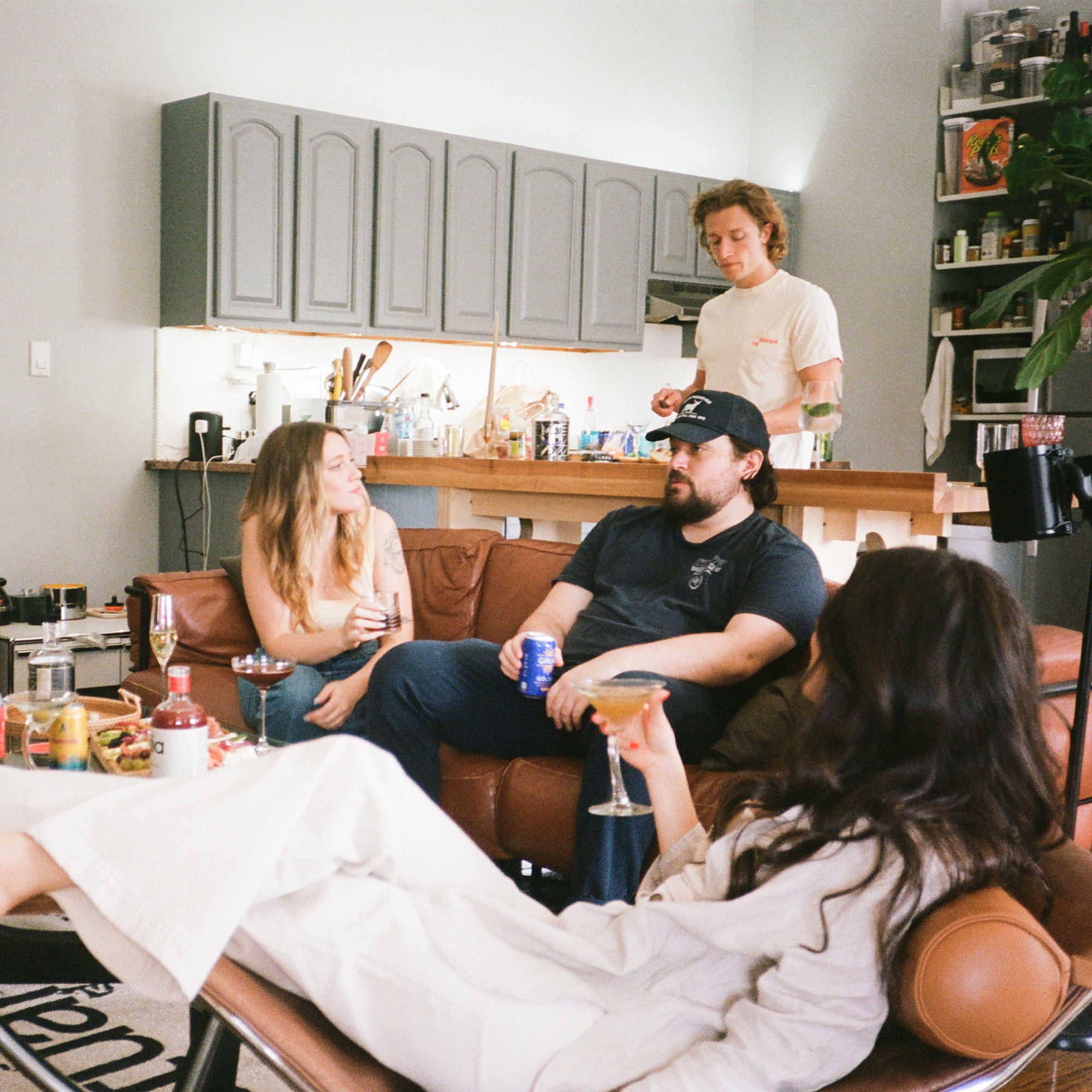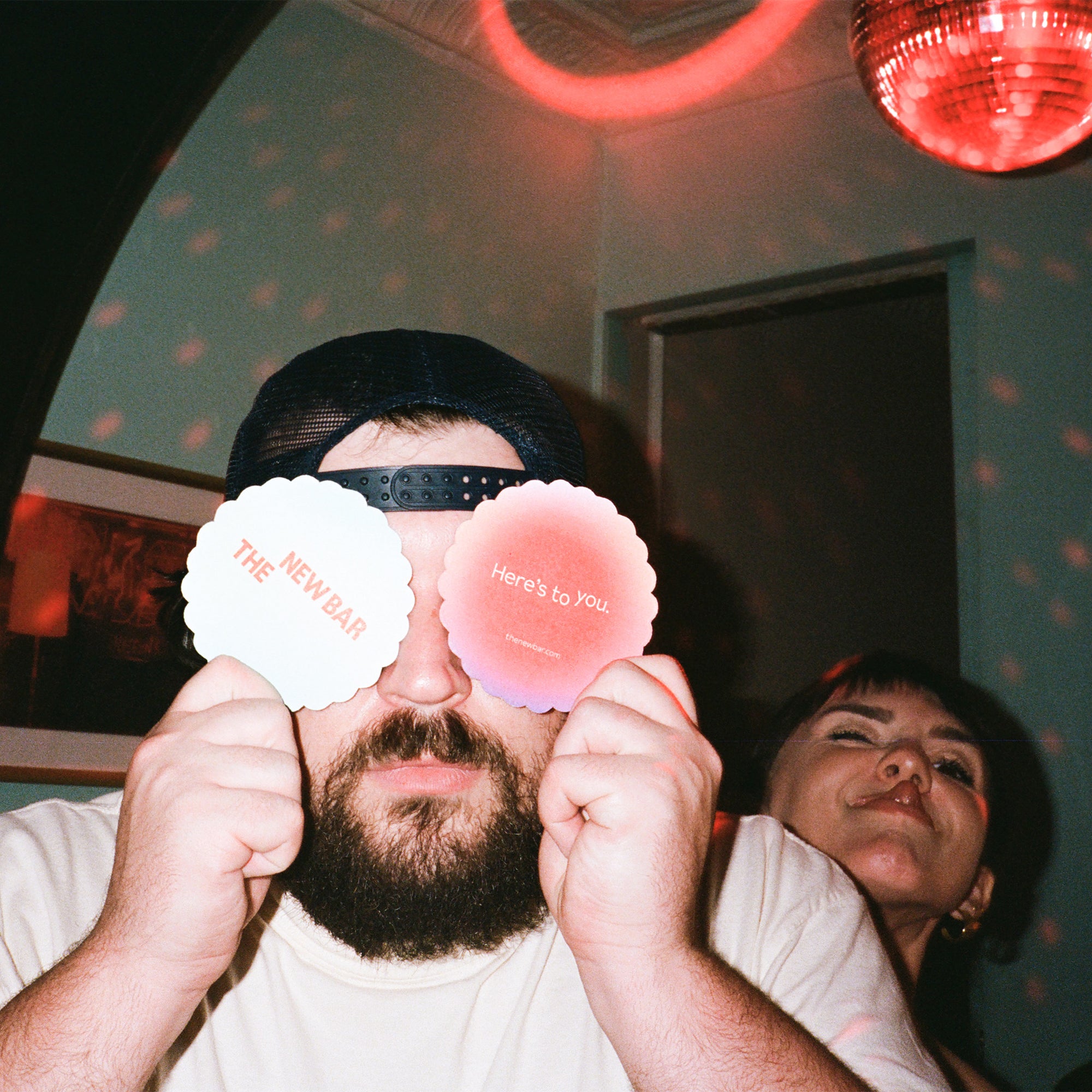You're probably considering cutting back on alcohol or ditching it entirely if you're reading this. Good for you for being good to you! We know this decision can be challenging and that once you've made it, you might feel like your beverage options are limited… But that's what we're here for! There's a whole world of nonalcoholic beverages, including nonalcoholic wine.
Today, let's look at the complex and delicious options you can enjoy while exploring an alcohol-free lifestyle. As wine lovers ourselves and now passionate fans of nonalcoholic wine, we know you probably have many questions, so we'll break it all down and maybe convince you to give it a try.
Okay, so what is nonalcoholic wine?
Exactly as its name implies: a wine with its alcohol removed. Other exchangeable terms for nonalcoholic wines are alcohol-free or dealcoholized wine. These three names all mean the same thing: a wine with less than 0.5% ABV.
But...How is Non Alcoholic Wine Different From Juice?
You're probably thinking—nonalcoholic wine, isn't that just grape juice? Nope! They are actually different. All wine, alcoholic and nonalcoholic, is made from grape juice but is produced differently. Nonalcoholic wine is created the same way as its alcoholic counterpart but goes through one final step where the alcohol is stripped away from the finished product.
So, is it the same as grape juice? No, because grape juice is just grapes' juice without fermentation. While wine and grape juice are both made from grapes and share some taste characteristics, you can taste differences between their complexity and flavor because of the fermentation process.
How do you make nonalcoholic wine?
Alcohol-free wine is made the same way as alcoholic wine, but with one more step that alcoholic wine doesn't go through.. The winemaking process starts harvesting grapes from a vineyard, either manually or using a machine. Grapes are selected and harvested to match the desired flavor profile for the wine or nonalcoholic wine they will be used to create. Among many other things that we can discuss in another blog at a later date, these grapes are selected based on their acidity levels, sweetness, and taste. Once the grapes have been harvested, they are taken to either a winery or manufacturer and sorted.
The grapes are then destemmed and crushed, commonly, with a mechanical press. Depending on the intended final product, the grapes are crushed quickly to separate the juice from the skins and seeds or slowly to allow the grapes to remain in contact with their skins. This variation in approach to skin separation is one of the ways red wine differs from white wine (red wine is the one that is crushed slowly to maintain skin contact).
To make wine, the now crushed grapes undergo the fermentation process. This science-y term is pretty simple: it converts the natural sugars in the juice of the crushed grapes into alcohol. This juice begins to ferment within six to twelve hours naturally. While it can depend on the type of wine, yeast is commonly added to aid in the fermentation process and ensure the correct consistency.
The fermentation process typically continues until all of the sugar has been converted into alcohol. Depending on the type of wine and flavors the producer wants to create, fermentation can last from 10 days to well over a month.
Nonalcoholic wine goes through the fermentation process and takes one more step than alcoholic wine: dealcoholization. Which is exactly what it sounds like; it's when the alcohol is removed from the wine either through distillation or filtration.
What should I expect with nonalcoholic wines?
While nonalcoholic wines are made the same way as regular wine, they are not entirely the same flavor. Sure, they are closer to the same complexity as "real" wine than grape juice, but the alcohol does add another element of complexity which you naturally lose in its absence.
Some tips on enjoying nonalcoholic wine:
Appreciate nonalcoholic wine for what it is
Nonalcoholic wine will not taste exactly like alcoholic wine, and the sooner you accept that, the happier you'll be.
Give nonalcoholic wine air
Seriously, let it breathe. Like alcoholic wine, nonalcoholic wine tastes far better after some air. When we sampled Null Wine's No. 3 Prickly Red, we noticed a massive difference between our first sip and the next day's flavor.
Bring in more flavors
Enhance the wine with a few more flavors to give your nonalcoholic wine a little more complexity. We added a couple drops of All The Bitter's New Orleans bitters to a glass of red wine and immediately noticed rich cherry tones and a new depth of earthy complexity. You can also add other liquids like nonalcoholic vermouth or even vinegar to create a little more “umph” in your wine.
If you're a little nervous about adding "stuff" to your glass of wine, try pairing it with food instead. Chardonnay with lemony seafood or pinot noir with a mushroom-based meal will *chef's kiss* be delicious. We’ll be honest, it won't taste exactly like the alcoholic wine and food pairing you remember, but let the tradition bring in a new appreciation!
Remember: not all wine is good
And we mean that for both alcoholic and nonalcoholic wine! Wine isn't created equal so if you're looking for a nonalcoholic wine to try, make sure you pay attention to our tips on every product page. We'll tell you honestly what to expect so you can find a product you'll like and be eager to try!
Give it a try!
Ultimately, nonalcoholic wine isn't the same as alcoholic wine (or grape juice), but if you pick a good bottle or use a few of our tips and tricks, you'll enjoy it for what it is!

